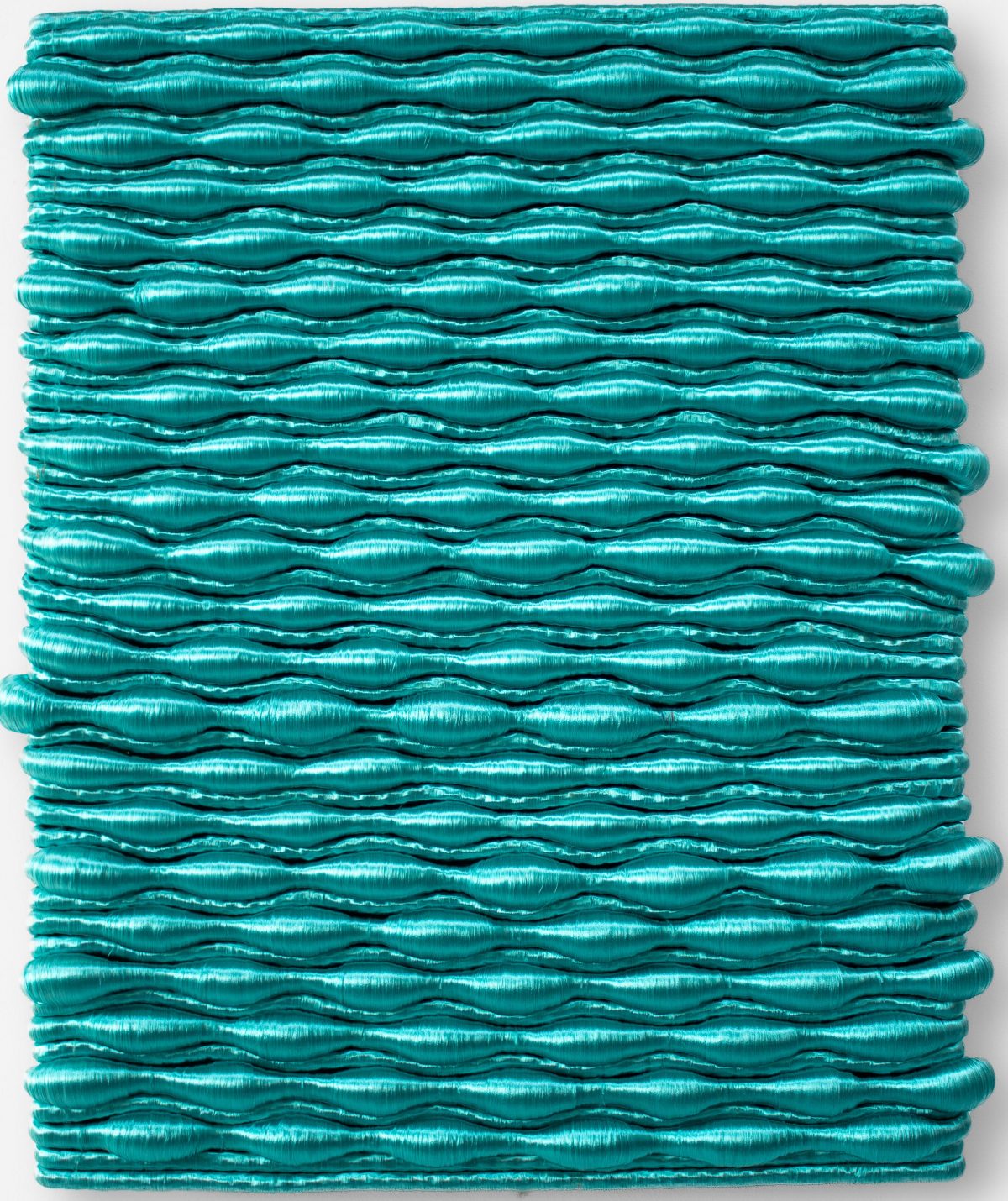
The art world’s growing interest in sustainability
As concerns about the future of the earth increase, sustainability is becoming increasingly important, including within art. Galleries and artists are integrating this theme in different ways, including the participants of KunstRAI 2023.
Joana Schneider’s work is a feast for the senses. It combines striking textures with often vibrant colors and the natural scent of the material it is made of. On the one hand, Schneider draws her inspiration from old Dutch crafts, for example the techniques of fishermen in the port of Katwijk. On the other hand, she explores the possibilities of natural and sustainable materials, such as recycled fishing ropes and nets. The shimmering azure blue of ‘Future Ocean 3’ thus conceals discarded rope and viscose yarn.
Schneider’s textile art is an example of how galleries and artists worldwide are increasingly focusing their attention on sustainability. This trend is strongly linked to concerns about the climate crisis and takes many different forms. For example, artists are researching the possibilities of recycled or found materials. World-famous in this respect are the works of Ghanaian sculptor El Anatsui, in which he incorporates found objects such as bottle caps, old milk cartons and driftwood. He gives his viewers food for thought on how consumer society, global inequality and European imperialism are connected. His work thus highlights another way art can go hand in hand with sustainability, namely as a catalyst for environmental activism and education.

Closer to home, Amsterdam’s Rademakers Gallery promotes sustainability, for instance by actively collaborating with artists who incorporate and promote this theme. Examples are the aforementioned Joana Schneider, but also Yamuna Forzani, Sampat Studio and Simone Post. Like Schneider, Post is interested in both old crafts and recycled materials. Based on the credo ‘throwing away is a waste’, she gives discarded cotton a second life in the form of colorful art objects.
Adding beauty and meaning to materials that seem worthless or mundane at first glance is also a recurring theme in Beppe Kessler’s jewelry, which will be shown by Galerie Rob Koudijs. Kessler challenges herself to work with humble materials such as threads and pieces of wood or textiles that she picks up anywhere. Her goal is to make her viewers see these materials with new eyes by upgrading, manipulating and combining them.

Furthermore, art and sustainability can come together in works that explore the relationship between humans and nature. In her drawings, for instance, Roos Holleman studies ‘the malleability and covetousness of the natural and material world – particularly as confrontations with our own mortality and cravings for beauty.’ Holleman is best known for her drawings of birds, but in the print ‘An Inordinate Fondness: Lily Moth’, which will be displayed by 99 Gallery, she draws our attention to the beauty of moths, which is much less noticed than that of butterflies. The print is a piezography, a printing technique that uses very high-quality color pigments, guaranteeing color fastness for more than a hundred years: another form of durability.

Works by Joana Schneider, Simone Post, Beppe Kessler, Roos Holleman and more artists that occupy themselves with the theme sustainability will be on display at KunstRAI / Art Amsterdam from 3 – 7 May in RAI Amsterdam.
Image on the left: Joana Schneider, ‘Future Ocean 3’, 2023, discarded rope and discarded viscose yarn, 80 x 60 x 10 cm. Rademakers Gallery, booth 16.